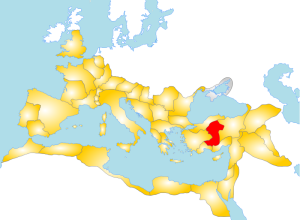Last week my copy of Gnosticism in Corinth by Walter Schmithals arrived in the mail and the first thing that hit my attention about it was a discussion in the “Introduction A” chapter of pre-Christian Christ Gnosticism. This looks interesting for the obvious reason that it just might throw some light on one particular interpretation of the New Testament epistles — that they know only a spiritual Christ who bears no relation to the Jesus of the Gospels.
Schmithals’ is always a densely packed read so I know I need to step out of character and be patient and read this slowly. And since I know I’m not the only one interested in this I have decided to take the time to type up blog notes as I go through this section. (I sometimes freely copy phrases of the translated Schmithals in what follows.) This topic is new to me and understanding gnostic thought is not easy. I welcome feedback about any mistakes or misunderstandings in what follows.
One interesting remark by Schmithals reminded me of the question of Paul’s knowledge of details of a Christ myth. He writes:
In general one may say that an excess of mythological speculation is always a sign of diminishing existential tension — and conversely . . . (pp. 29-30)
Food for thought here, I think, about the question of the emerging mythological details that accrued around the Christ Jesus as the years progressed.
Schmithals describes what he sees as a pr-Christian system of Jewish Gnosticism.
He begins with a discussion of the thought system of Simon (Simon Magus in Acts) as described by Hippolytus. This surprised me since other scholars (e.g. Birger Pearson, Ancient Gnosticism) dismiss the account of Hippolytus as a description of a much later — very post-Christian — development of Simon’s thought. But Schmithals does present a number of reasons to think that what Hippolytus is depicting is, rather, very early — pre-Christian — Jewish Gnosticism. (I am sure Pearson has read Schmithal’s works so I would like to read his responses. If anyone can point to his or other reviews I’d be grateful.)
Schmithals then describes similar Jewish Gnostic systems that he sees as related to the thought-world of the Simonians and shows how they embraced a Christ idea that is quite unlike the concept of Christ in the later (very Christian) Gnostic thought. Schmithals shows the way the Jewish Christ was reinterpreted to identify the Primal Man, or the Great Power that generated all.
It is difficult not to see overlaps here with passages in the Pauline letters. (But Schmithals clearly distinguishes Paul’s thought from that of this early Gnosticism.)
I don’t know if I will finish all of Schmithal’s discussion in a few blog posts but I can at least start with good intentions. Continue reading “Pre-Christian Christ Gnosticism: 1”
Like this:
Like Loading...
 Continued from post 1.
Continued from post 1.

